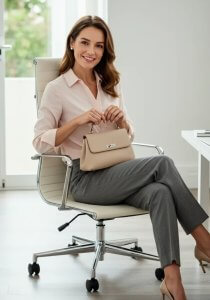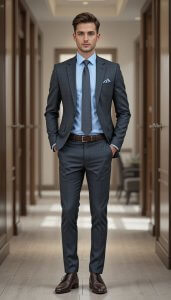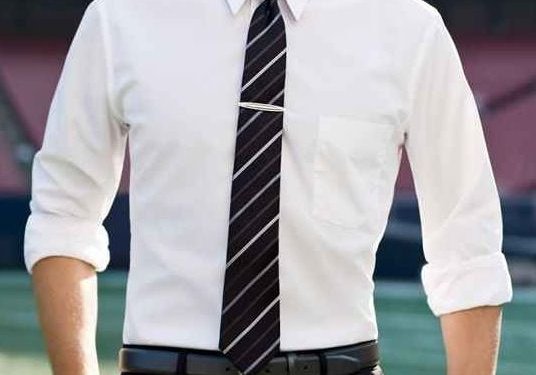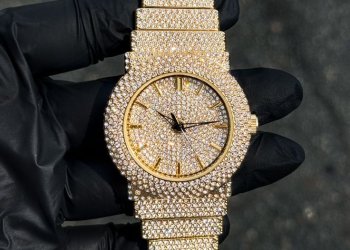Creating the right first impression during an interview is easier when you understand how to dress for the occasion.
Even though many companies now adopt relaxed styles, most recruiters still notice how you present yourself.
Your outfit shows how serious you are about the role, and it also reflects your understanding of the workplace culture.
Because of this, choosing the right interview outfit matters. This guide explains different dress codes for interviews and offers practical tips that help you decide what works best.

Why Dressing Right Matters
Your clothes communicate before you speak. When you walk into a room, the interviewer often forms an opinion within the first few seconds.
A neat outfit tells them you respect the process and value the opportunity. It also shows you are prepared and thoughtful.
Since interviews can be stressful, dressing properly can boost your confidence as well. When you look good, you naturally feel more comfortable, and that confidence helps you express yourself clearly.
Understanding Company Culture
Before choosing an outfit, take time to understand the company culture. Many companies have online photos or social media posts that show how their employees dress.
Some organizations prefer formal outfits, while others lean toward smart casual or even casual styles. When you study these details, you avoid dressing too formally or too casually.
Formal or Corporate Dress Code
Many traditional workplaces expect a formal dress code. This style is common in banks, law firms, consulting firms, and government offices.
For men, a suit is the safest choice. A simple shirt, a tie, and polished shoes complete the look. Neutral colors such as navy, grey, or black work well because they appear professional and calm.
Women can choose a well-fitted suit, a knee-length skirt, or tailored trousers paired with a smart blouse. Closed-toe heels or flats make the outfit neat and balanced.
Although accessories are allowed, keeping them simple makes the appearance clean and organised.
Smart Casual Dress Code
A smart casual dress code offers more flexibility. Many tech companies, creative agencies, startups, and small businesses prefer this style.
Even though it is more relaxed than corporate wear, it still requires neat and thoughtful dressing. For men, a button-down shirt or a fine polo paired with chinos works well.
Clean shoes, like loafers, help complete the outfit. Women can wear blouses, simple dresses, knee-length skirts, or tailored trousers.
Adding a cardigan or blazer can give a polished feel without looking too formal. Since smart casual can vary by company, it helps to stay slightly on the formal side to be safe.

Casual Dress Code
A casual dress code rarely applies to interviews, but some modern workplaces still use it. Even when a company is casual, your outfit should never look messy.
Clean jeans without rips, a plain shirt, and neat shoes may be enough for certain roles. However, it is better to elevate the look by adding a blazer or choosing darker jeans.
Women can choose simple dresses, clean jeans, or modest tops that create a relaxed yet tidy appearance.
Because casual outfits can easily appear too simple, paying attention to grooming becomes even more important.
Business Casual Dress Code
Business casual sits between corporate and smart casual. It is one of the most common styles for interviews today.
Men can wear dress shirts, chinos, or dark trousers. A blazer can be added if the environment looks more structured.
For women, a blouse and trousers, a modest dress, or a skirt with a simple top works perfectly. The goal is to stay professional while still looking comfortable and approachable.
Neutral colors often give the best results because they are easy to match and do not distract the interviewer.

Grooming and Personal Hygiene
No matter which dress code you follow, grooming plays a huge role in how you appear. Make sure your hair is neat and properly styled.
Your nails should be clean, and your shoes should look polished. Light scents or no perfume at all are safer choices because strong fragrances can distract or irritate others.
Fresh breath and clean clothes also help you feel relaxed and confident. Even small details like ironing your outfit can make a big difference, so preparing a day before the interview saves time and reduces stress.
Choosing the Right Colors
Colors affect how people perceive you, so selecting calm and professional tones is important. Neutral shades such as navy, black, grey, white, and brown usually work best.
These colors blend well with different environments and create a mature look. Brighter colors can be used but should be balanced with softer tones.
For example, a bright top can pair with dark trousers to maintain harmony. Since interviews focus on your skills and personality, simple colors prevent distractions and keep attention where it should be.
Accessories and Final Details
Accessories should support your outfit rather than overpower it. Watches, simple rings, or light necklaces are acceptable.
Bags should look neat and organized, and it helps to choose bags that complement your clothes. For men, belts and shoes should match to create a clean appearance.
Women should avoid overly large earrings or flashy pieces that may draw attention away from the conversation. Since interviews are professional meetings, choosing minimal accessories always works better.
What to Avoid During an Interview
Some choices can harm your first impression. Loud patterns, excessive makeup, rumpled clothes, and distracting jewelry can reduce your professional appearance.
Avoid slippers, extremely casual sneakers, or outfits that look too revealing. If you are unsure about a particular item, it is often safer to leave it out.
Since the main goal is to present yourself as reliable, each part of your outfit should support that message.
Dress Codes for Virtual Interviews
Virtual interviews still require good dressing because you need to look prepared on camera. Even though you may sit in your home, choosing a neat top helps you appear focused and serious.
Solid colors work better on video because they create a clear image. It also helps to check how your clothes look on camera before the interview.
Simple grooming still applies because it affects your confidence and presence. As you prepare, make sure your background looks clean and your lighting is clear so the interviewer can focus on you.
Last but not least
Dressing for an interview does not need to be complicated. With the right knowledge, you can choose an outfit that reflects your personality while showing respect for the opportunity.
When you understand the company culture, stay neat, and select colors that blend well, you create a strong foundation for success.
Every interview is a chance to show your best self, and the right outfit helps you make that first impression count.




